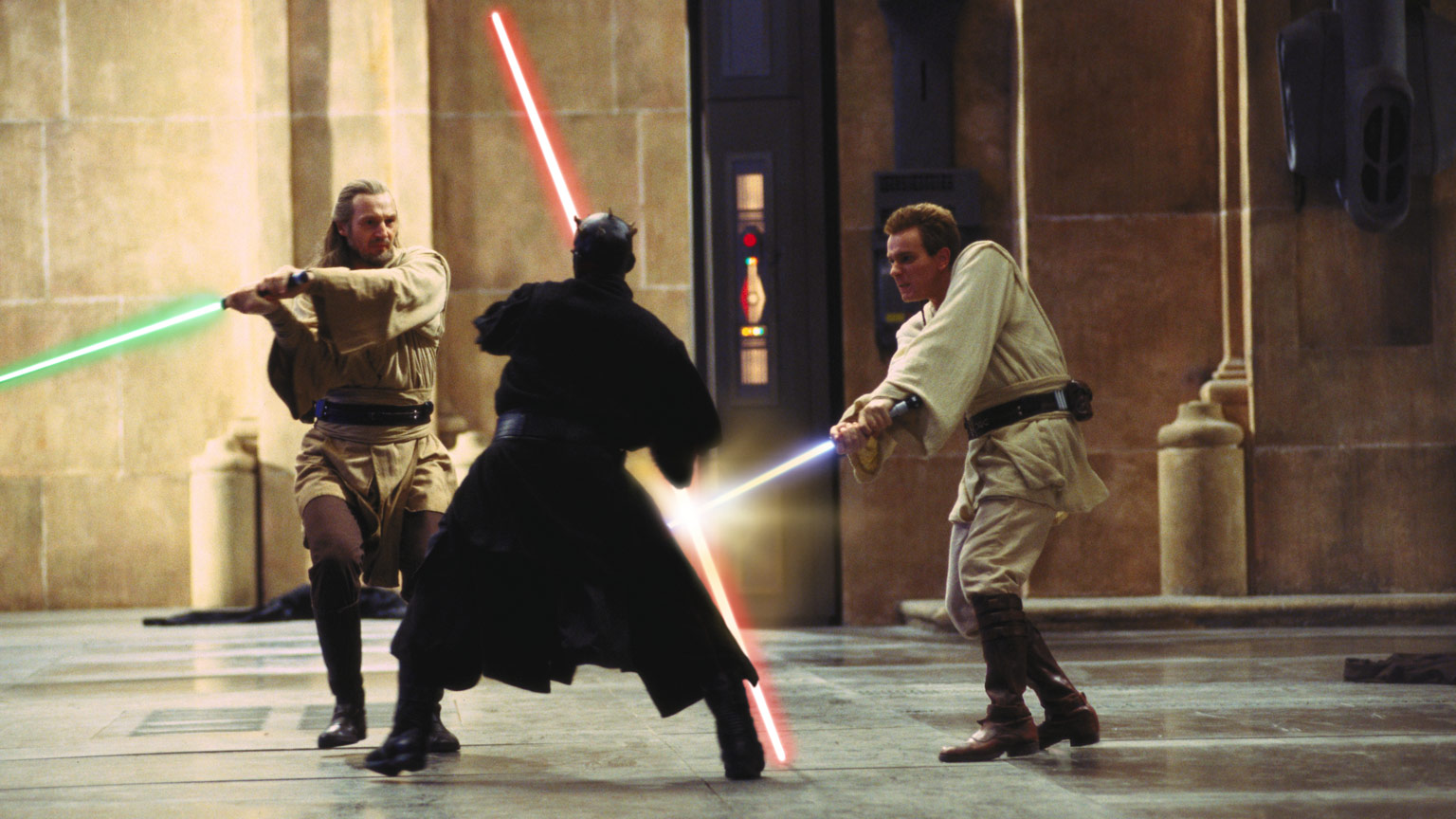"A lightsaber—any weapon—only achieves worth in how it is wielded—in the effort, the struggle of one who holds it."
―Kreia
Lightsaber combat referred to several schools of martial arts specialized in, though not limited to, fighting with a lightsaber. Such fighting forms were required to compensate for or take advantage of the unique attributes of lightsabers, notably the odd balance of the weapon, all of the weight being in the hilt, and the Omni-directional cutting edge. The most prominent lightsaber-oriented combat styles were the seven forms of the Jedi Order, though other organizations were known to have developed their own styles and methods, an example being the Sith-developed Dun Möch technique.

The various combat forms owed their unique focuses and methods to the eras in which they were created, as they were oftentimes developed to answer a new generation of weapons technology. For example, the dueling-centric Makashi form was created during a time when Dark Jedi and rogue Force-sensitives ran rampant through the galaxy, and lightsaber duels became a common occurrence, whereas Soresu was developed when such confrontations were rare, and Jedi were more likely to confront blaster-wielding opponents and gunslingers rather than lightsaber duelists.
Throughout the millennia since the lightsaber's creation, the art of dueling with them developed into seven "classic" forms and numerous other styles. It was difficult to master for a number of reasons, one of them is that all of the weight a lightsaber had was in its hilt. It had been said that only a Force-sensitive individual could completely master lightsaber combat, though there have been some great non-force sensitive duelists, such as Pre Vizsla, or General Grievous. All seven traditional lightsaber forms included the same basic techniques as ancient sword-fighting styles, such as defensive postures, overhand strikes, parries, and counters. A riposte was a technique where the user struck an opponent after deflecting or blocking an attack.
The lightsaber was a very versatile weapon, owing to its unique lightness and Omni-directional cutting ability. It could be wielded one-handed or with both hands. The Jedi were trained to use the Force as a conduit between the wielder and the weapon. Through this bond in the Force, the blade became an extension of their being; it moved with instinct as though it were a part of the body. The Jedi's attunement to the Force accounted for the almost superhuman agility and reflex illustrated in the use of the lightsaber. Early in the weapon's history, when the Sith were numerous, the art of lightsaber dueling flourished. In later periods though, only rarely would Jedi face an adversary with a weapon capable of repelling a lightsaber.

Although the blade was weightless, two-handed slashes were the most common movement. This was because momentum was still needed to cut through solid objects, as solid objects were repelled by the blade arc until they were changed to gas or plasma. Therefore, momentum was required to counteract the initial repelling force. The stronger the swing, the faster and easier the blade would cut. If little force was applied to the swing, the repelling force of the blade arc would leave shallow cuts. When two lightsaber blades came in contact with each other, the two repelling forces made the blade appear to be solid. Also, the field that caused the energy to arc back into the hilt caused some gyroscopic effects. While technically weightless, the blade still had some resistance to changes in motion. The slight gyroscopic effects were easily controlled by a trained Force user but could become problematic for the untrained.




Comments